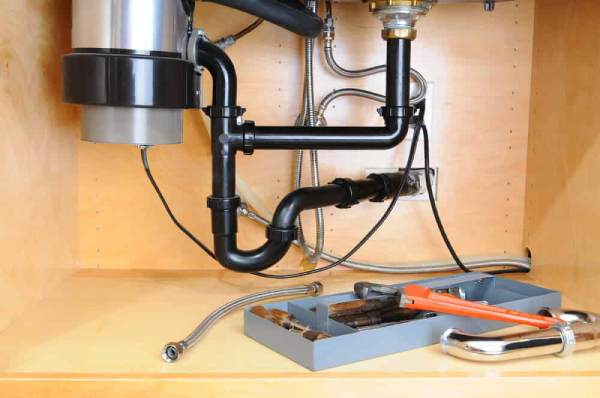Garbage Disposal Backing Up Into Sink: Causes, Solutions, and Prevention
A garbage disposal is one of those kitchen tools that makes life easier—until you need garbage disposal repair. One common problem is when the garbage disposal starts to back up into the sink, causing clogs and a messy sink area. Mr. Rooter Plumbing details the primary sources of this issue and provides solutions and ways to prevent future outbreaks.
Common Causes of Garbage Disposal Backup
Several factors can lead to garbage disposal backups.
- Food Buildup and Clogs
The most common reason a garbage disposal backs up is a buildup of food particles. Disposals are powerful, but they’re not designed to handle everything. Certain foods, especially fibrous or starchy items like potato peels, celery, and pasta, can cause clogs. These food items don’t break down easily and can get tangled around the disposal blades.
- Grease and Oil
Pouring grease or oil down the drain might seem harmless, but these substances can solidify once they cool. As grease cools, it hardens and sticks to the inside of your pipes, narrowing the passage for food and water. Even with regular use, grease buildup can eventually overwhelm the disposal system.
- Improper Installation or Old Disposal Unit
Sometimes, a garbage disposal backs up due to improper installation. If the disposal is not set up correctly, the water and food waste won’t drain as they should, causing them to go back into the sink. Additionally, if your garbage disposal is old, it may lose efficiency. In this case, it might be time for a garbage disposal replacement in Salado.
- Drain Pipe Blockage
Occasionally, the issue isn’t with the garbage disposal but with the drain pipes. If the pipes leading away from the disposal are blocked or partially clogged, water has nowhere to go and will go back into the sink.
Solutions for Garbage Disposal Backing Up
Now that we’ve covered the possible causes, let’s look at practical solutions.
- Unclog the Disposal Using Simple Tools
If the backup is minor, you can try unclogging the disposal yourself. Turn off the disposal and use a flashlight to inspect the unit. Look for any visible food particles and remove them with pliers or tongs. Never stick your hand inside the disposal! Once cleared, run cold water and turn the disposal back on to see if the issue is resolved.
- Flush with Baking Soda and Vinegar
Another DIY option is using a baking soda and vinegar solution. Pour half a cup of baking soda, followed by a cup of vinegar, into the disposal. Let it fizz for 10-15 minutes, then rinse with hot water.
- Use a Plunger
If the sink is still backed up, try using a plunger. Fill the sink with water and position the plunger over the drain. Create a seal and pump the plunger up and down several times.
- Call a Plumber for Tough Clogs
If the above solutions don’t work or if the backup keeps returning, it’s time to call a professional. A plumber can assess whether the problem lies with the garbage disposal or the plumbing system. A plumbing service can use special tools to clear out stubborn clogs or inspect the pipes for damage. Sometimes, they may recommend garbage disposal repair or replacement if the unit is old or malfunctioning.
Preventing Garbage Disposal Backup
Here are some tips to avoid backups.
- Know What Not to Put in the Disposal
Certain foods can cause more problems than others. Avoid putting fibrous foods like celery, onion skins, and corn husks into the disposal, as they can wrap around the blades and clog the drain. Starchy foods like pasta and rice can also cause blockages because they expand when wet. Also, avoid putting coffee grounds and eggshells in the disposal, as they can create a sludge-like buildup over time.
- Dispose of Grease Properly
As mentioned earlier, grease and oil can harden the pipes, leading to clogs. Instead of pouring grease down the drain, pour it into a container, let it solidify, and throw it in the trash. This simple habit can save you from many clogs and the need for a plumbing repair service in the future.
- Run the Disposal Regularly
Running the disposal regularly helps prevent food particles from sitting and building up in the unit. When you use it, run cold water through it for about 15 seconds before and after turning it on.
- Schedule Routine Check-Ups
Finally, consider having a plumber or plumbing service check your garbage disposal and system annually. Regular maintenance can identify minor issues before they become big problems.
Mr. Rooter Plumbing
While many issues with garbage disposal can be solved on your own, sometimes it’s best to call a plumber in Killeen, TX. Mr. Rooter Plumbing can ensure that any plumbing issue is handled correctly, giving you peace of mind and a fully functioning kitchen sink.
